Vikas Dwivedi
Deep vs. Shallow: Benchmarking Physics-Informed Neural Architectures on the Biharmonic Equation
Oct 06, 2025Abstract:Partial differential equation (PDE) solvers are fundamental to engineering simulation. Classical mesh-based approaches (finite difference/volume/element) are fast and accurate on high-quality meshes but struggle with higher-order operators and complex, hard-to-mesh geometries. Recently developed physics-informed neural networks (PINNs) and their variants are mesh-free and flexible, yet compute-intensive and often less accurate. This paper systematically benchmarks RBF-PIELM, a rapid PINN variant-an extreme learning machine with radial-basis activations-for higher-order PDEs. RBF-PIELM replaces PINNs' time-consuming gradient descent with a single-shot least-squares solve. We test RBF-PIELM on the fourth-order biharmonic equation using two benchmarks: lid-driven cavity flow (streamfunction formulation) and a manufactured oscillatory solution. Our results show up to $(350\times)$ faster training than PINNs and over $(10\times)$ fewer parameters for comparable solution accuracy. Despite surpassing PINNs, RBF-PIELM still lags mature mesh-based solvers and its accuracy degrades on highly oscillatory solutions, highlighting remaining challenges for practical deployment.
Towards Fast Option Pricing PDE Solvers Powered by PIELM
Oct 05, 2025Abstract:Partial differential equation (PDE) solvers underpin modern quantitative finance, governing option pricing and risk evaluation. Physics-Informed Neural Networks (PINNs) have emerged as a promising approach for solving the forward and inverse problems of partial differential equations (PDEs) using deep learning. However they remain computationally expensive due to their iterative gradient descent based optimization and scale poorly with increasing model size. This paper introduces Physics-Informed Extreme Learning Machines (PIELMs) as fast alternative to PINNs for solving both forward and inverse problems in financial PDEs. PIELMs replace iterative optimization with a single least-squares solve, enabling deterministic and efficient training. We benchmark PIELM on the Black-Scholes and Heston-Hull-White models for forward pricing and demonstrate its capability in inverse model calibration to recover volatility and interest rate parameters from noisy data. From experiments we observe that PIELM achieve accuracy comparable to PINNs while being up to $30\times$ faster, highlighting their potential for real-time financial modeling.
Curriculum Learning-Driven PIELMs for Fluid Flow Simulations
Mar 08, 2025Abstract:This paper presents two novel, physics-informed extreme learning machine (PIELM)-based algorithms for solving steady and unsteady nonlinear partial differential equations (PDEs) related to fluid flow. Although single-hidden-layer PIELMs outperform deep physics-informed neural networks (PINNs) in speed and accuracy for linear and quasilinear PDEs, their extension to nonlinear problems remains challenging. To address this, we introduce a curriculum learning strategy that reformulates nonlinear PDEs as a sequence of increasingly complex quasilinear PDEs. Additionally, our approach enables a physically interpretable initialization of network parameters by leveraging Radial Basis Functions (RBFs). The performance of the proposed algorithms is validated on two benchmark incompressible flow problems: the viscous Burgers equation and lid-driven cavity flow. To the best of our knowledge, this is the first work to extend PIELM to solving Burgers' shock solution as well as lid-driven cavity flow up to a Reynolds number of 100. As a practical application, we employ PIELM to predict blood flow in a stenotic vessel. The results confirm that PIELM efficiently handles nonlinear PDEs, positioning it as a promising alternative to PINNs for both linear and nonlinear PDEs.
Global versus Local: Evaluating AlexNet Architectures for Tropical Cyclone Intensity Estimation
Apr 11, 2024Abstract:Given the destructive impacts of tropical cyclones, it is critical to have a reliable system for cyclone intensity detection. Various techniques are available for this purpose, each with differing levels of accuracy. In this paper, we introduce two ensemble-based models based on AlexNet architecture to estimate tropical cyclone intensity using visible satellite images. The first model, trained on the entire dataset, is called the global AlexNet model. The second model is a distributed version of AlexNet in which multiple AlexNets are trained separately on subsets of the training data categorized according to the Saffir-Simpson wind speed scale prescribed by the meterologists. We evaluated the performance of both models against a deep learning benchmark model called \textit{Deepti} using a publicly available cyclone image dataset. Results indicate that both the global model (with a root mean square error (RMSE) of 9.03 knots) and the distributed model (with a RMSE of 9.3 knots) outperform the benchmark model (with a RMSE of 13.62 knots). We provide a thorough discussion of our solution approach, including an explanantion of the AlexNet's performance using gradient class activation maps (grad-CAM). Our proposed solution strategy allows future experimentation with various deep learning models in both single and multi-channel settings.
PICS in Pics: Physics Informed Contour Selection for Rapid Image Segmentation
Nov 13, 2023Abstract:Effective training of deep image segmentation models is challenging due to the need for abundant, high-quality annotations. Generating annotations is laborious and time-consuming for human experts, especially in medical image segmentation. To facilitate image annotation, we introduce Physics Informed Contour Selection (PICS) - an interpretable, physics-informed algorithm for rapid image segmentation without relying on labeled data. PICS draws inspiration from physics-informed neural networks (PINNs) and an active contour model called snake. It is fast and computationally lightweight because it employs cubic splines instead of a deep neural network as a basis function. Its training parameters are physically interpretable because they directly represent control knots of the segmentation curve. Traditional snakes involve minimization of the edge-based loss functionals by deriving the Euler-Lagrange equation followed by its numerical solution. However, PICS directly minimizes the loss functional, bypassing the Euler Lagrange equations. It is the first snake variant to minimize a region-based loss function instead of traditional edge-based loss functions. PICS uniquely models the three-dimensional (3D) segmentation process with an unsteady partial differential equation (PDE), which allows accelerated segmentation via transfer learning. To demonstrate its effectiveness, we apply PICS for 3D segmentation of the left ventricle on a publicly available cardiac dataset. While doing so, we also introduce a new convexity-preserving loss term that encodes the shape information of the left ventricle to enhance PICS's segmentation quality. Overall, PICS presents several novelties in network architecture, transfer learning, and physics-inspired losses for image segmentation, thereby showing promising outcomes and potential for further refinement.
Numerical Approximation in CFD Problems Using Physics Informed Machine Learning
Nov 01, 2021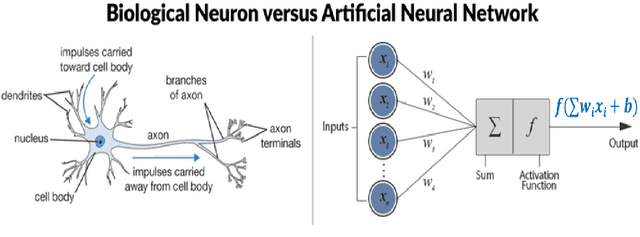
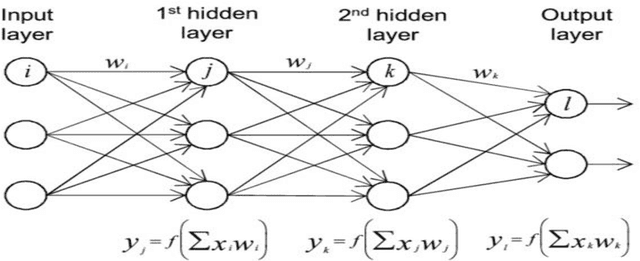
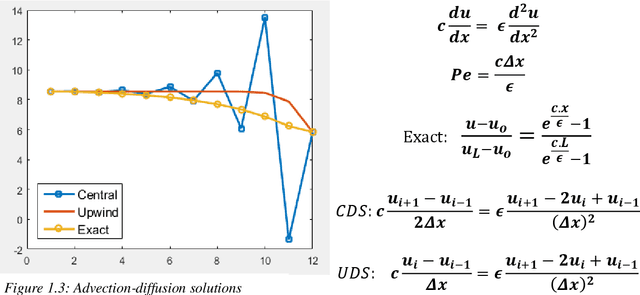

Abstract:The thesis focuses on various techniques to find an alternate approximation method that could be universally used for a wide range of CFD problems but with low computational cost and low runtime. Various techniques have been explored within the field of machine learning to gauge the utility in fulfilling the core ambition. Steady advection diffusion problem has been used as the test case to understand the level of complexity up to which a method can provide solution. Ultimately, the focus stays over physics informed machine learning techniques where solving differential equations is possible without any training with computed data. The prevalent methods by I.E. Lagaris et.al. and M. Raissi et.al are explored thoroughly. The prevalent methods cannot solve advection dominant problems. A physics informed method, called as Distributed Physics Informed Neural Network (DPINN), is proposed to solve advection dominant problems. It increases the lexibility and capability of older methods by splitting the domain and introducing other physics-based constraints as mean squared loss terms. Various experiments are done to explore the end to end possibilities with the method. Parametric study is also done to understand the behavior of the method to different tunable parameters. The method is tested over steady advection-diffusion problems and unsteady square pulse problems. Very accurate results are recorded. Extreme learning machine (ELM) is a very fast neural network algorithm at the cost of tunable parameters. The ELM based variant of the proposed model is tested over the advection-diffusion problem. ELM makes the complex optimization simpler and Since the method is non-iterative, the solution is recorded in a single shot. The ELM based variant seems to work better than the simple DPINN method. Simultaneously scope for various development in future are hinted throughout the thesis.
Distributed physics informed neural network for data-efficient solution to partial differential equations
Jul 21, 2019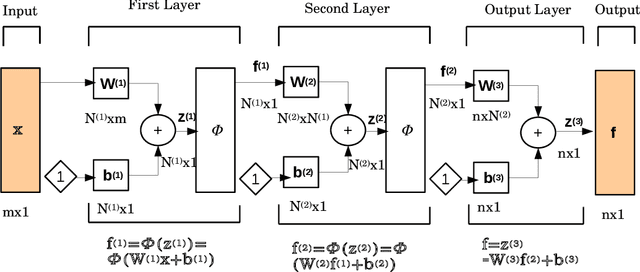



Abstract:The physics informed neural network (PINN) is evolving as a viable method to solve partial differential equations. In the recent past PINNs have been successfully tested and validated to find solutions to both linear and non-linear partial differential equations (PDEs). However, the literature lacks detailed investigation of PINNs in terms of their representation capability. In this work, we first test the original PINN method in terms of its capability to represent a complicated function. Further, to address the shortcomings of the PINN architecture, we propose a novel distributed PINN, named DPINN. We first perform a direct comparison of the proposed DPINN approach against PINN to solve a non-linear PDE (Burgers' equation). We show that DPINN not only yields a more accurate solution to the Burgers' equation, but it is found to be more data-efficient as well. At last, we employ our novel DPINN to two-dimensional steady-state Navier-Stokes equation, which is a system of non-linear PDEs. To the best of the authors' knowledge, this is the first such attempt to directly solve the Navier-Stokes equation using a physics informed neural network.
Physics Informed Extreme Learning Machine (PIELM) -- A rapid method for the numerical solution of partial differential equations
Jul 08, 2019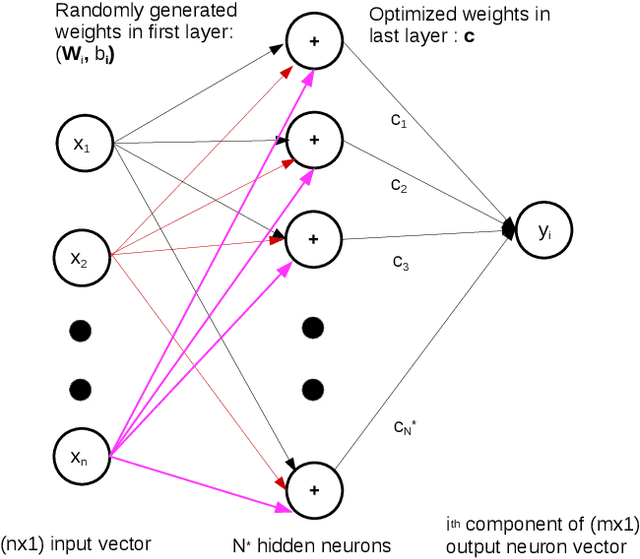
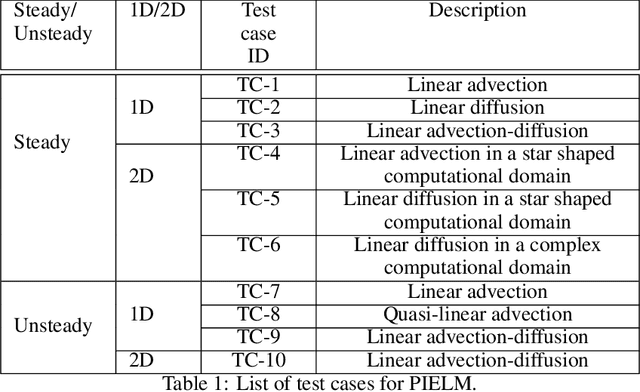
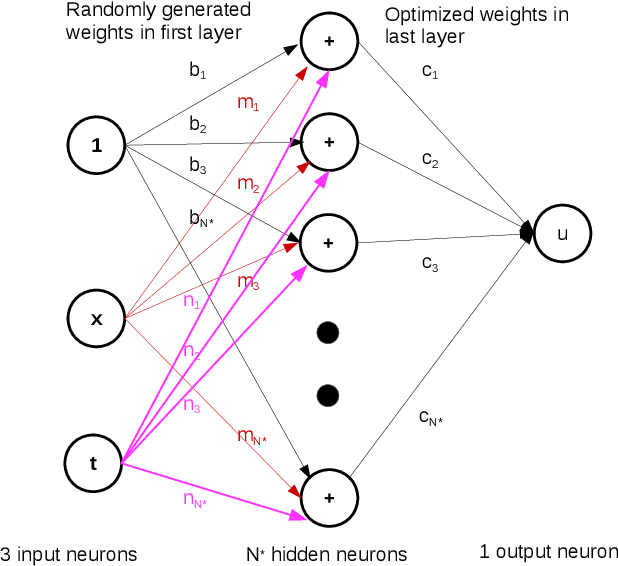

Abstract:There has been rapid progress recently on the application of deep networks to the solution of partial differential equations, collectively labelled as Physics Informed Neural Networks (PINNs). In this paper, we develop Physics Informed Extreme Learning Machine (PIELM), a rapid version of PINNs which can be applied to stationary and time dependent linear partial differential equations. We demonstrate that PIELM matches or exceeds the accuracy of PINNs on a range of problems. We also discuss the limitations of neural network based approaches, including our PIELM, in the solution of PDEs on large domains and suggest an extension, a distributed version of our algorithm -{}- DPIELM. We show that DPIELM produces excellent results comparable to conventional numerical techniques in the solution of time-dependent problems. Collectively, this work contributes towards making the use of neural networks in the solution of partial differential equations in complex domains as a competitive alternative to conventional discretization techniques.
 Add to Chrome
Add to Chrome Add to Firefox
Add to Firefox Add to Edge
Add to Edge